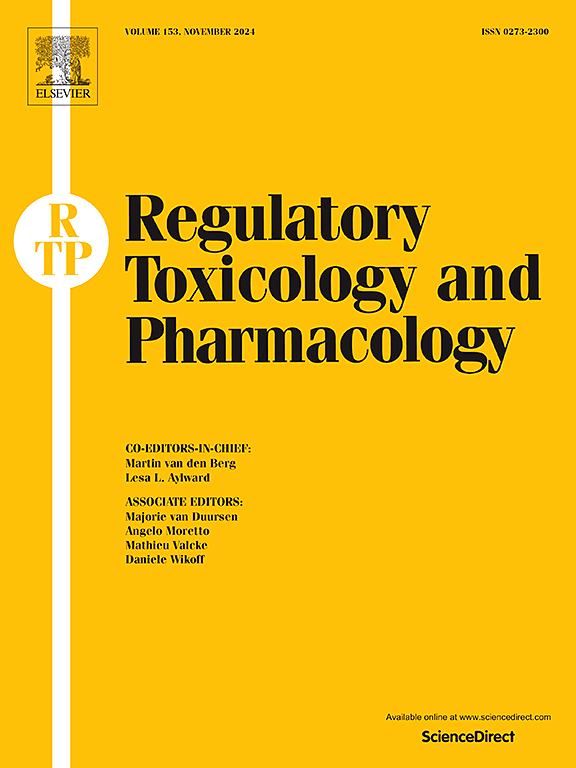Comparison of carbonyls and tobacco-specific nitrosamines in aerosols of heated tobacco products and conventional cigarette smoke using both targeted and untargeted analytical methods
IF 3
4区 医学
Q1 MEDICINE, LEGAL
引用次数: 0
Abstract
Cigarette smoke (CS) exposes users to harmful substances, contributing to chronic lung diseases. Heated tobacco products (HTPs) are marketed as safer alternatives due to their lower toxicant emissions from heating rather than burning tobacco. However, HTPs may produce unique toxicants that are not found in CS. The emissions of carbonyls and tobacco-specific nitrosamines (TSNAs) were compared using targeted analysis using liquid chromatography/ion mobility-quadrupole time-of-flight mass spectrometry (UPLC-MS/MS) and untargeted analysis with UPLC-QToF and Progenesis® QI software. Targeted analysis revealed that HTP aerosol emissions contain significantly lower levels of harmful compounds compared to CS, with reductions of 8.7%–91.6% in 11 carbonyls and 85.7%–95.4% in four TSNAs) Untargeted analysis identified 25 carbonyls and seven nitrosamines in both HTPs and conventional cigarettes, with acetoin, dimethylbenzaldehyde, furfural, and diisopropanolnitrosamine (DIPN) found at relatively high levels in HTPs. While untargeted methods introduce some uncertainty, these findings underscore distinct chemical differences between HTPs and conventional cigarettes. Long-term studies are essential to fully understand the health implications of HTP use.

使用靶向和非靶向分析方法比较加热烟草制品和传统卷烟烟雾气溶胶中的羰基和烟草特异性亚硝胺
香烟烟雾(CS)使使用者接触有害物质,导致慢性肺部疾病。加热烟草制品作为更安全的替代品销售,因为加热烟草比燃烧烟草排放的有毒物质更少。然而,htp可能会产生CS中没有的独特有毒物质。使用液相色谱/离子迁移-四极杆飞行时间质谱(UPLC-MS/MS)进行靶向分析,使用UPLC-QToF和Progenesis®QI软件进行非靶向分析,比较羰基和烟草特异性亚硝胺(TSNAs)的排放量。目标分析显示,与CS相比,HTP气溶胶排放中有害化合物的含量明显较低,11种羰基减少了8.7%-91.6%,4种tsna减少了85.7%-95.4%。非目标分析发现,HTP和传统香烟中都含有25种羰基和7种亚硝胺,其中乙酰酮、二甲苯甲醛、糠醛和二异丙醇亚硝胺(DIPN)的含量相对较高。虽然非针对性的方法带来了一些不确定性,但这些发现强调了HTPs和传统香烟之间明显的化学差异。长期研究对于充分了解HTP使用对健康的影响至关重要。
本文章由计算机程序翻译,如有差异,请以英文原文为准。
求助全文
约1分钟内获得全文
求助全文
来源期刊
CiteScore
6.70
自引率
8.80%
发文量
147
审稿时长
58 days
期刊介绍:
Regulatory Toxicology and Pharmacology publishes peer reviewed articles that involve the generation, evaluation, and interpretation of experimental animal and human data that are of direct importance and relevance for regulatory authorities with respect to toxicological and pharmacological regulations in society. All peer-reviewed articles that are published should be devoted to improve the protection of human health and environment. Reviews and discussions are welcomed that address legal and/or regulatory decisions with respect to risk assessment and management of toxicological and pharmacological compounds on a scientific basis. It addresses an international readership of scientists, risk assessors and managers, and other professionals active in the field of human and environmental health.
Types of peer-reviewed articles published:
-Original research articles of relevance for regulatory aspects covering aspects including, but not limited to:
1.Factors influencing human sensitivity
2.Exposure science related to risk assessment
3.Alternative toxicological test methods
4.Frameworks for evaluation and integration of data in regulatory evaluations
5.Harmonization across regulatory agencies
6.Read-across methods and evaluations
-Contemporary Reviews on policy related Research issues
-Letters to the Editor
-Guest Editorials (by Invitation)

 求助内容:
求助内容: 应助结果提醒方式:
应助结果提醒方式:


